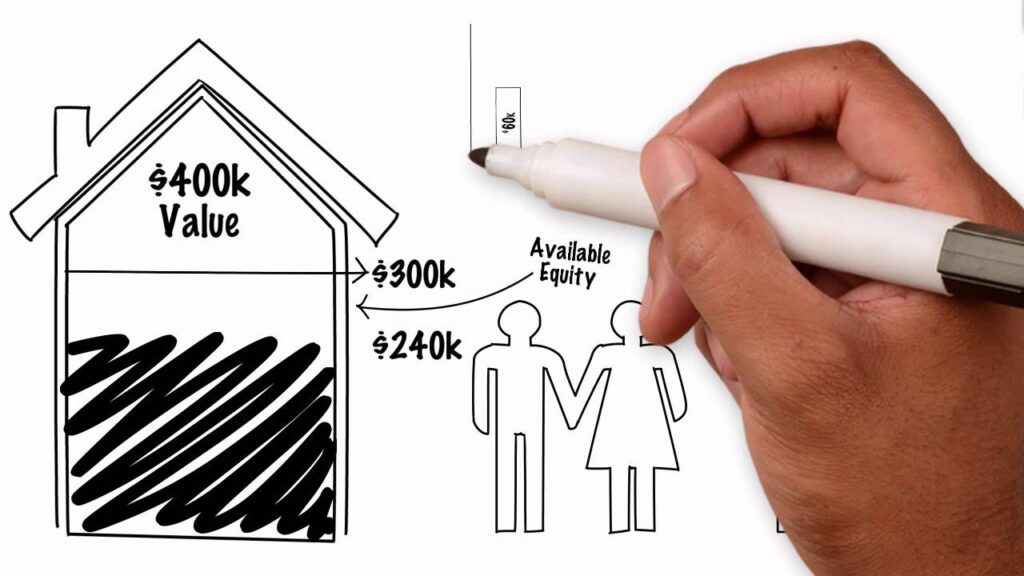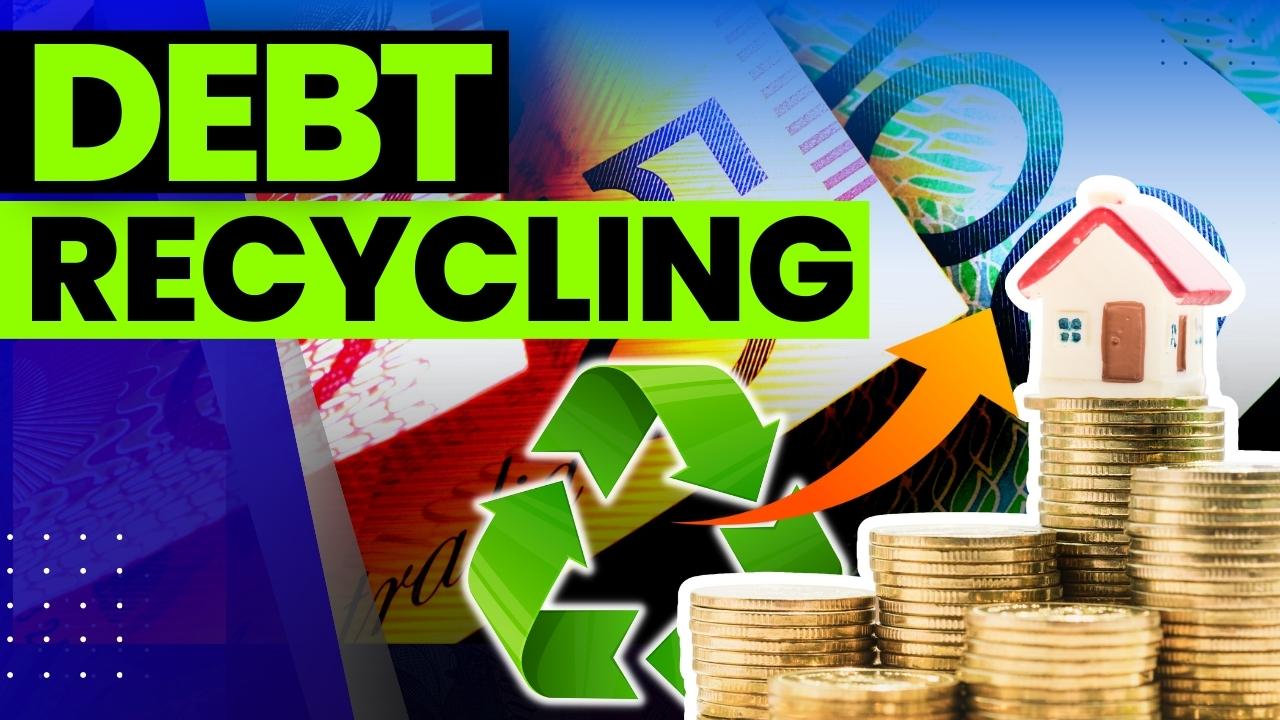Debt recycling is a powerful financial strategy that can have a transformative impact on your financial landscape. By understanding and implementing the principles of debt recycling, you can improve your financial health and maximize your investment potential.
This article will guide you through the concept of what is debt recycling, its benefits, the process involved, and the risks and considerations that come with it. Additionally, we will explore the tax implications of debt recycling to help you make informed decisions.
Understanding the Concept of Debt Recycling
Debt recycling is a strategy that involves leveraging your existing debts to generate wealth and create a more secure financial future. The basic idea behind debt recycling is to use your non-deductible debts, such as your mortgage or personal loan, to invest in income-producing assets. By doing so, you can potentially turn your bad debts into good debts.
Debt recycling is a concept that has gained popularity in recent years as individuals seek ways to optimize their financial situation. It is a strategy that requires careful planning and consideration, but when executed effectively, it can yield significant benefits. You can visit https://medsearchfinancial.com/breaking-the-chains-the-power-of-debt-recycling-in-financial-freedom/ to get about the power of debt recycling in financial freedom.
The Basic Principles of Debt Recycling
The principles of debt recycling are rooted in the concept of compound interest. By using any surplus cash flow to pay off your non-deductible debts more quickly, you can reduce the interest you pay over time. This, in turn, frees up more cash that you can use to invest in assets that generate income and potentially appreciate in value.

Let’s take an example to illustrate this concept. Suppose you have a mortgage with a high-interest rate. By focusing on paying off this mortgage as quickly as possible, you can save a substantial amount of money in interest payments over the long term. This saved money can then be redirected towards investments that have the potential to generate a higher return.
One of the key advantages of debt recycling is its ability to create a positive cash flow cycle. As the income from your investments grows, you can use it to not only pay off your deductible debts, such as your mortgage, but also to further accelerate the repayment of your non-deductible debts. This creates a self-perpetuating cycle where your debts are gradually reduced, and your investments continue to grow.
The Role of Debt Recycling in Financial Management
Debt recycling plays a vital role in effective financial management. It provides an opportunity to reduce your overall debt burden while simultaneously building a diversified investment portfolio. This strategy allows you to take control of your financial future by leveraging your existing resources.
One of the key benefits of debt recycling is its ability to create a more balanced financial portfolio. By investing in a variety of income-producing assets, you can spread your risk and potentially increase your returns. This diversification can help protect you from market volatility and economic downturns, ensuring a more stable financial future.
Furthermore, debt recycling allows you to take advantage of tax benefits. By strategically structuring your investments, you can potentially claim tax deductions on the interest paid on your deductible debts. This can result in significant tax savings, further enhancing the overall effectiveness of the debt recycling strategy.
It is important to note that debt recycling is not without risks. Like any investment strategy, it requires careful consideration and monitoring. It is crucial to assess your risk tolerance, financial goals, and investment horizon before embarking on a debt recycling journey.
In conclusion, debt recycling is a powerful strategy that can help individuals optimize their financial situation and create a more secure future. By leveraging existing debts to invest in income-producing assets, individuals can potentially turn their bad debts into good debts. However, it is important to approach debt recycling with caution and seek professional advice to ensure it aligns with your financial goals and circumstances.
The Benefits of Debt Recycling
Debt recycling is a financial strategy that offers numerous benefits to individuals who implement it. By strategically managing their debts and investments, individuals can improve their financial health and maximize their investment potential. Let’s explore some of the key advantages of debt recycling in more detail:
Improving Your Financial Health
One of the primary benefits of debt recycling is its potential to significantly improve your financial health. By implementing this strategy, you can effectively reduce your overall debt levels and increase your net worth. How does it work? Well, debt recycling involves focusing on paying down non-deductible debts while simultaneously leveraging them to invest in income-producing assets.
By prioritizing the repayment of non-deductible debts, such as personal loans or credit card balances, you can gradually eliminate these financial burdens. At the same time, by utilizing the equity in your home or other assets, you can invest in income-producing assets like shares or property. This approach allows you to generate additional income and build wealth over time.
As you continue to pay down your non-deductible debts and accumulate income-producing assets, your financial position strengthens. Your net worth increases, and you become better equipped to achieve your long-term financial goals.
Maximizing Your Investment Potential
Debt recycling presents a unique opportunity to make your existing debts work for you. Instead of viewing debts as a burden, this strategy allows you to redirect your surplus cash flow towards investments. By doing so, you can potentially create additional income streams and increase your investment potential.
When you invest in income-producing assets, such as shares or property, you open up avenues for long-term wealth accumulation. The income generated from these investments can supplement your regular income, providing you with financial security and stability.

Furthermore, debt recycling enables you to take advantage of the power of compounding. As your investments grow, the returns they generate can be reinvested, compounding your wealth over time. This compounding effect can significantly enhance your investment potential and help you achieve your financial goals more quickly.
In conclusion, debt recycling offers numerous benefits to individuals seeking to improve their financial health and maximize their investment potential. By strategically managing their debts and investments, individuals can reduce overall debt levels, increase net worth, and create additional income streams. If implemented correctly, debt recycling can pave the way for long-term wealth accumulation and financial security.
The Process of Debt Recycling
Debt recycling is a financial strategy that involves leveraging certain debts for investment purposes. By strategically managing your debts, you can potentially increase your wealth and create a more secure financial future. Let’s explore the process of debt recycling in more detail.
Identifying Suitable Debts for Recycling
Not all debts are suitable for recycling. It is essential to identify the debts that can be effectively leveraged for investment purposes. Generally, non-deductible debts, such as personal loans and credit card debts, are prime candidates for recycling.
Non-deductible debts are those that do not offer any tax benefits. By recycling these debts, you can redirect the funds towards investments that generate income or appreciate in value. This can help you build wealth over time.
On the other hand, deductible debts, such as mortgages, may offer certain tax benefits that can outweigh the potential advantages of debt recycling. Assessing the suitability of debts is a crucial step in the process. It is important to consider the interest rates, tax implications, and potential returns on investment before deciding which debts to recycle.
Implementing a Debt Recycling Strategy
Implementing a debt recycling strategy requires careful planning and consideration. You will need to develop a budget, analyze your cash flow, and determine how much surplus money you can contribute towards paying off non-deductible debts and investing in income-generating assets.
Creating a budget is an essential step in managing your finances effectively. It allows you to track your income and expenses, identify areas where you can cut back on spending, and allocate funds towards debt repayment and investments.
Analyzing your cash flow is another crucial aspect of implementing a debt recycling strategy. By understanding your income and expenses on a monthly basis, you can determine how much surplus money you have available to allocate towards debt repayment and investments.
Consulting with a financial advisor can provide valuable insights and guidance in creating a personalized debt recycling strategy tailored to your specific circumstances. A financial advisor can help you analyze your debts, assess your risk tolerance, and recommend suitable investment options that align with your financial goals.
Furthermore, a financial advisor can assist you in monitoring your progress, making adjustments to your strategy as needed, and ensuring that you stay on track towards achieving your financial objectives.
In conclusion, debt recycling is a powerful financial strategy that can help you make the most of your debts and create wealth over time. By identifying suitable debts for recycling and implementing a well-thought-out strategy, you can optimize your financial situation and build a stronger financial future.

Risks and Considerations in Debt Recycling
Evaluating the Potential Risks
Like any financial strategy, debt recycling comes with its own set of risks. It is important to evaluate these risks and proceed with caution. One potential risk is the fluctuation in the value of investments. Market volatility can impact your investment returns, and if your debts are not properly managed, it can lead to financial instability.
Another risk to consider is the potential impact on your credit score. Debt recycling involves taking on additional debt, and failure to manage it responsibly can negatively affect your creditworthiness.
Important Factors to Consider Before Recycling Debt
Prior to embarking on a debt recycling journey, it is crucial to consider your personal financial situation, goals, and risk tolerance. Debt recycling is not suitable for everyone, and it is essential to ensure that you have the financial capacity and discipline to manage the additional debts and investments effectively.
Debt Recycling and Tax Implications
Understanding the Tax Benefits
Debt recycling can provide certain tax benefits, especially when investing in income-producing assets. The interest paid on the non-deductible debts used for investment purposes can potentially be claimed as a tax deduction, reducing your taxable income.
However, it is important to seek professional tax advice to fully understand the tax implications of debt recycling and ensure compliance with relevant tax laws and regulations.
Navigating the Tax Implications
Navigating the tax implications of debt recycling can be complex. It is recommended to consult with a qualified tax professional who can provide personalized advice based on your specific circumstances. They can help you optimize the tax benefits while staying within the legal boundaries.
In conclusion, debt recycling is a strategy that can transform your financial landscape by leveraging your existing debts to generate wealth and improve your financial position. By understanding the principles, benefits, process, and risks associated with debt recycling, you can make informed decisions that align with your financial goals. Additionally, seeking professional advice when implementing a debt recycling strategy and navigating the tax implications is crucial for a successful and compliant approach.

Leave a Reply